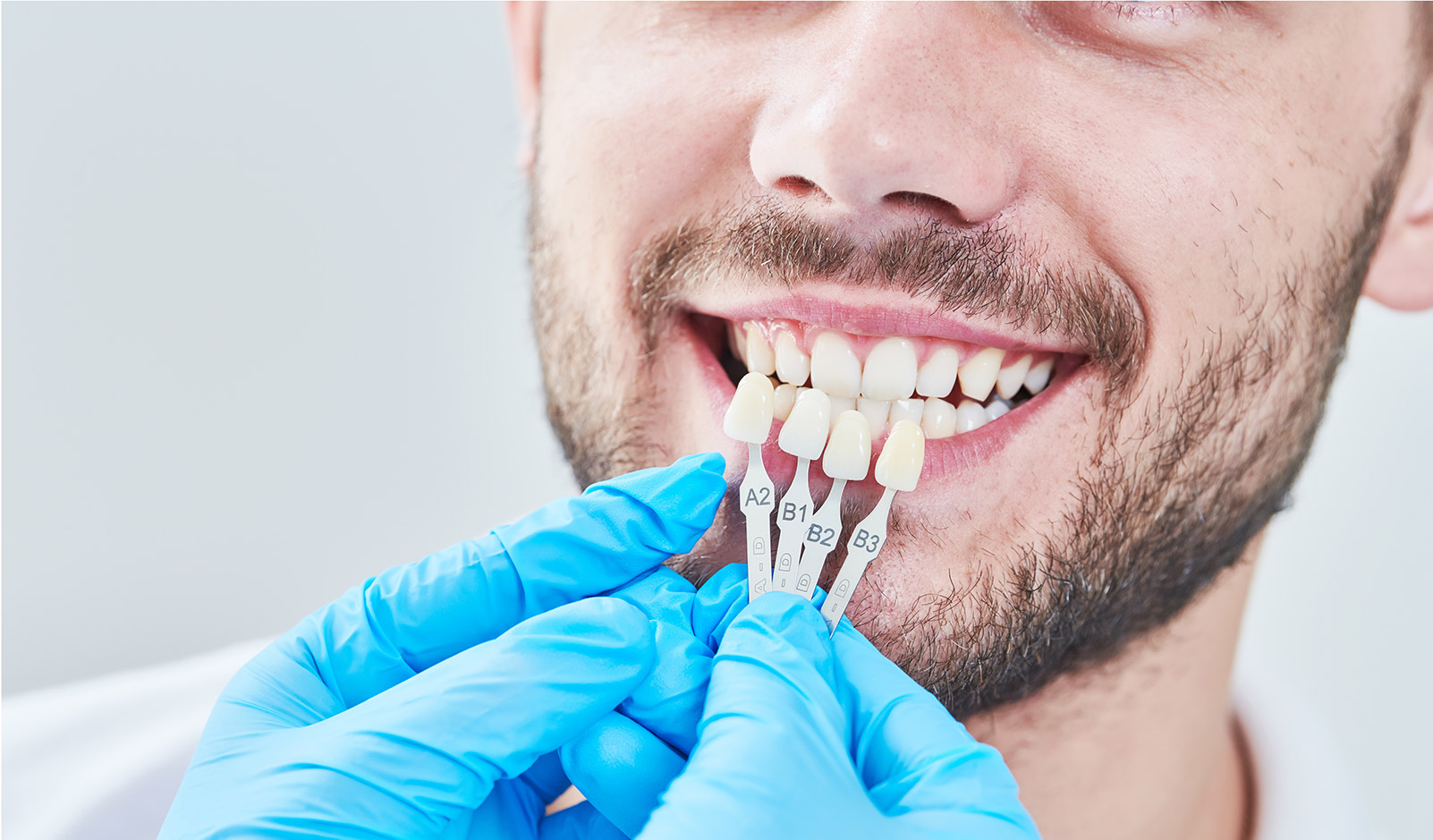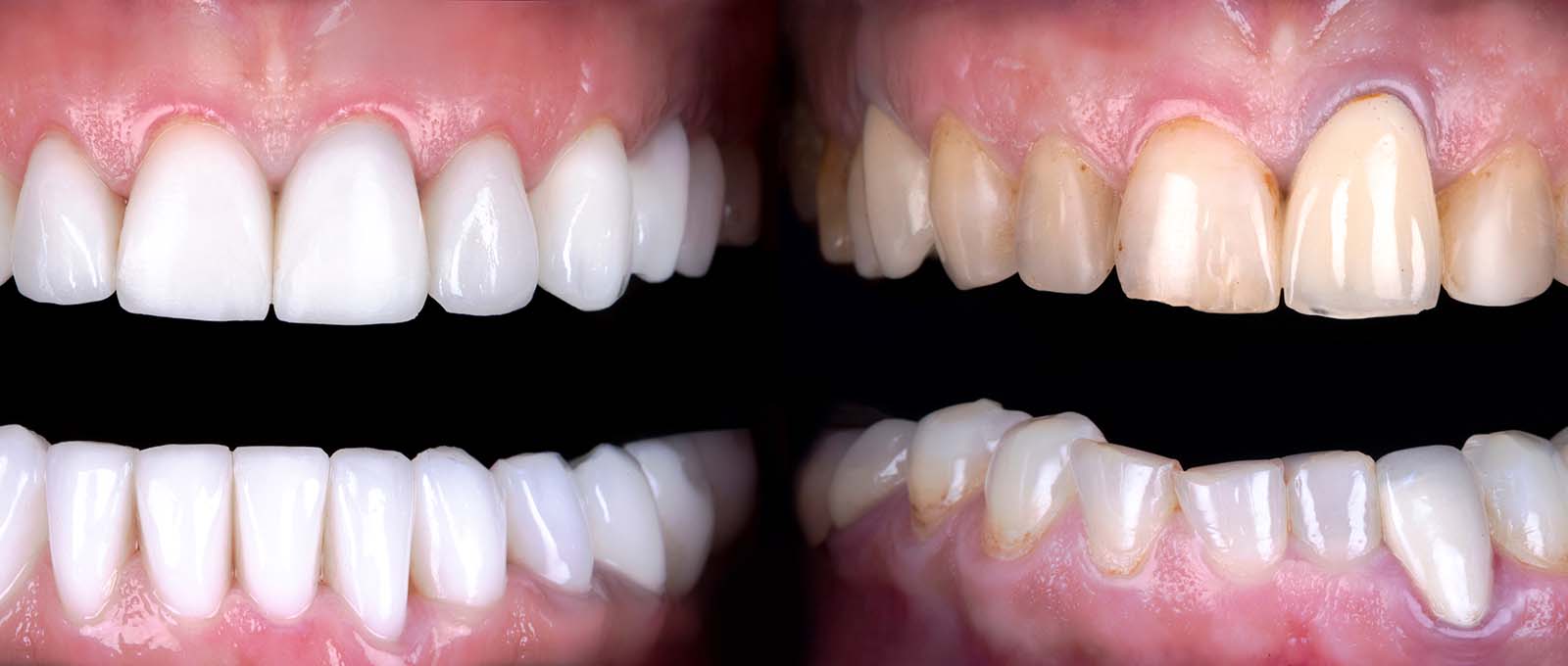Veneers and crowns are both two popular dental options for repairing broken chipped, cracked, crooked, decayed and weakened, or discolored teeth, and they can both also be colored to match your original teeth, with the exception crowns that are made of all metal.
Veneers vs Crowns: Which is the Right Choice for Your Smile Makeover?
Both options also help improve the function of teeth; however, they differ in how they are used; therefore, which you choose will usually depend on the condition of your teeth, as well as the results you are trying to receive.
Veneers cost and cost of crown in Los Angeles also differ, as well as whether it is covered by insurance or not. They both also have their own pros and cons to consider when choosing the best option for you, which will be covered in detail.
Difference between Veneers and Crowns
What are Veneers?
Veneers are mainly used to restore the look of teeth or to correct slightly irregular shaped teeth. They also require less grinding, as compared to crowns, because they are designed to cover only part of the front area of the tooth, so more of the original tooth remains intact. Therefore, to be a successful candidate for veneers, your tooth has to have enough enamel on it to enable the veneer to be applied.
What is the Process for Veneers?
To prepare your teeth for veneers, the enamel of the tooth is ground down approximately half a millimeter, depending on the type of veneer, to create a textured surface for the veneer to bond.
The dentist will begin by making an impression of your teeth, using one of various methods. A dental mold will be made of your teeth and then either used on-site to prepare your permanent veneer, or it may be sent to an off-site lab for the veneer preparation.
Once the tooth has been filed down, the dentist may either provide you with a temporary veneer until the permanent one is ready, or you may simply go without one if only a bit of the tooth was ground. When the permanent veneer is ready, the dentist will then use a special cement to bond the veneer to the tooth.
After the procedure, the veneer may be vulnerable to slight movement until the cement completely dries; therefore, for certain activities, or if you clench or grind your teeth during sleep, your doctor may recommend you wear a dental guard to protect the veneer.
Because the process of veneers requires filing the tooth, which can be uncomfortable, patients may also be given a local anesthetic to help make the procedure more bearable.
What Are Crowns?
Crowns are, in short, a type of cap for your tooth that provides protection and support for damaged teeth that may have become weakened due to various factors, such as if you have a broken tooth, tooth decay, or a cavity that has become so large that it can not be filled. They can also be designed from various materials, which your dentist will help you select based on your circumstance.
Since crowns are designed to cover the tooth entirely, it means more of the tooth needs to be ground down to fit the crown, which makes it a more invasive procedure than veneers.
The Process for Crowns
During the process for crowns, most of the tooth will be ground down to fit the crown.
If the tooth to be fitted for the crown has decay, the dentist will remove the decayed portion of the tooth before preparing the crown, which means a large part of the tooth may have to be filed away. Therefore, the tooth may need to built up afterward in order to support the crown. Likewise, any severely damaged tooth may also have to be built up before the crown placement to enable it to bear the weight off the crown.
A dental model of your teeth will be made, which will then be sent to an on-site lab for the crown to be developed, or if no lab is available on-site, the dental mold will be sent to an outside lab for the crown to be prepared.
The filed tooth may receive a temporary crown to enable full use of the tooth while the permanent crown is being developed. Once the permanent crown is ready, the temporary crown will be removed, and the permanent crown will be fitted and properly adjusted on the tooth to enable a correct bite. The crown will then be cemented in place to restore the tooth.
Sometimes the crown may move slightly, in which case, it may need to be readjusted because it can change your bite.
What is Cerec?
Chairside Economical Restoration of Esthetic Ceramics, also known as CEREC crowns, are another type of crown; however, they differ from other crowns in that they are made from a solid piece of ceramic or resin materials, which usually makes them more durable.
They also don’t require messy molds like other crown procedures. Instead, a digital impression is taken of the teeth and then sent to the onsite lab for the crown to be designed. CEREC crowns can also be made and applied in just one appointment, which eliminates the need for a temporary crown.
CEREC crowns fit perfectly with your original teeth, and they also match their color.
Veneers Cost vs Crowns Cost
Veneers Costs
Porcelain Veneers cost in Los Angeles typically ranges between $1,000 per tooth to $3,500 per tooth, depending on the condition of the patient’s tooth; however, depending on the dentist, it is possible to get porcelain veneers for $120 per month.
The number of veneers you receive will also determine the cost of veneers; therefore, it is important to consult with an experienced professional to avoid being recommended more veneers than you need, which can increase your cost. An experienced dentist will also know the right type of veneer to suggest based on the particular nature of your teeth, as well as your medical history.
Therefore, be sure to receive a veneer consultation from an experienced dentist Los Angeles who can walk you through the process of receiving veneers, as well as show you before and after photos, which will enable you to envision your results.
Crowns Costs
Crowns can be made from various materials, which range in cost; therefore, the overall cost of crowns will vary based on the chosen material. For instance, ceramic and porcelain crowns are more costly than crowns made of all metal.
The condition of the tooth will also affect how much crown cost in Los Angeles because it will determine how much prep work is required. In some cases, the size of the tooth will also add to the cost because it will determine the amount of material needed.
However, the average cost of crowns typically ranges between $1,000 per tooth to $3,500 per tooth for the crown alone. To figure your total crown cost, you will also need to factor in the cost of other procedures that might be needed, such as a root canal.
Pros and Cons of Veneers and Crowns
Veneers Pros
- Veneers enable you to keep most of your natural tooth intact.
- Veneer wearers typically experience less movement than crown wearers.
- Veneers maintain their look overtime, and they do not show a gingival margin after years of wear like crowns.
Veneers Cons
- Since veneers do not cover the entire tooth, it means more of the tooth is susceptible to decay.
- Veneers can not be removed.
- While some veneer materials last long, composite veneers only last from 5 to 7 years.
- Dental insurance may not cover veneers.
Crown Pros
- Crowns protect your tooth more from decay because it covers the entire tooth.
- Unlike dentures, crowns do not have to be removed and cleaned.
- Porcelain crowns mimic the look and feel of your own natural teeth.
- Only portion of crowns may be covered by dental insurance.
Crown Cons
- Porcelain crowns are breakable, which means they are susceptible to damage.
- Crowns require more filing of your natural tooth.
- Teeth with crowns may become more sensitive to extreme temperatures in the beginning, and they may also cause gum pain.
- PFM, or Porcelain-fused-to-metal crowns, may show a gingival line between your crown and your own tooth.
Whether you choose to receive a crown or veneers, you can rest assured you are getting a dental restoration treatment with a high rate of success; however, be sure to choose quality materials for best results. You should also understand the special care involved with each material, which will also help improve its success rate.
Since both methods are used differently and also require different techniques, you should also be sure to consult with your dentist first who will conduct a full analysis of your dental condition, as well as consider your medical history, to help ensure you select the right method based on your particular needs. The dentist can also alert you of any payment plans or other payment options to help make your procedure more affordable.
So, if you are looking for where to get Crown in Los Angeles, consider our qualified and experienced dentists for quality service and your best smile yet!











